Indigenous defenders stand between illegal roads and survival of the Amazon rainforest – elections i
Illegal roads have brought deforestation, fire and other environmental damage to the Amazon. Indigenous territory in many areas has blocked them.
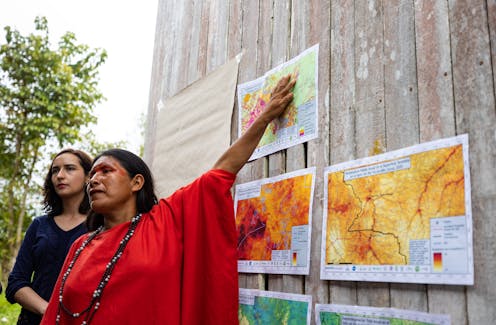
The Ashéninka woman with the painted face radiated a calm, patient confidence as she stood on the sandy banks of the Amonia River and faced the loggers threatening her Amazonian community.
The loggers had bulldozed a trail over the mahogany and cedar saplings she had planted, and blocked the creeks her community relied on for drinking water and fish. Now, the outsiders wanted to widen the trail into a road to access the towering rainforests that unite the Peruvian and Brazilian border along the Juruá River.
María Elena Paredes, as head of the Sawawo Hito 40 monitoring committee, said no, and her community stood by her.
She knew she represented not just her community and the other Peruvian Indigenous communities, but also her Brazilian cousins downstream who also rely on these forests, waters and fish.
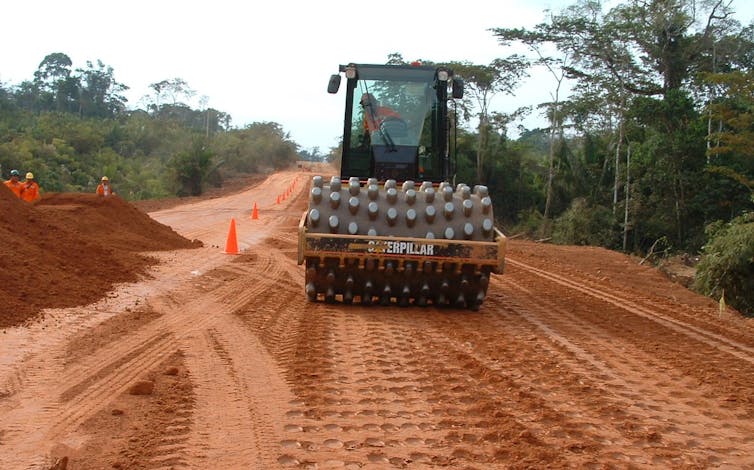
The Indigenous residents of the Amazon borderlands understand that the loggers and their tractors and chainsaws are the sharp point of a road allowing coca growers, land traffickers and others access to traditional Indigenous territories and resources. They also realize that their Indigenous communities may be all that stands in defense of the forest and stops invaders and road builders.
October’s elections in Brazil and Peru could be a turning point away from deforestation, unsustainable road building and the targeting of Indigenous lands – or the election results could continue to escalate the pressure.
Explosive growth of illegal roads as government pulled back
During the COVID-19 pandemic, the Amazon rainforest has witnessed explosive growth in informal and illegal roads.
The Amazonian departments of Ucayali, Loreto and Madre de Dios, Peru, saw road expansion increase by 25% from 2019 to 2020 and 16% from 2020 to 2021. In the Brazilian Amazon, roads are being built at such a rapid pace that researchers are turning to artificial intelligence to map the expansion.
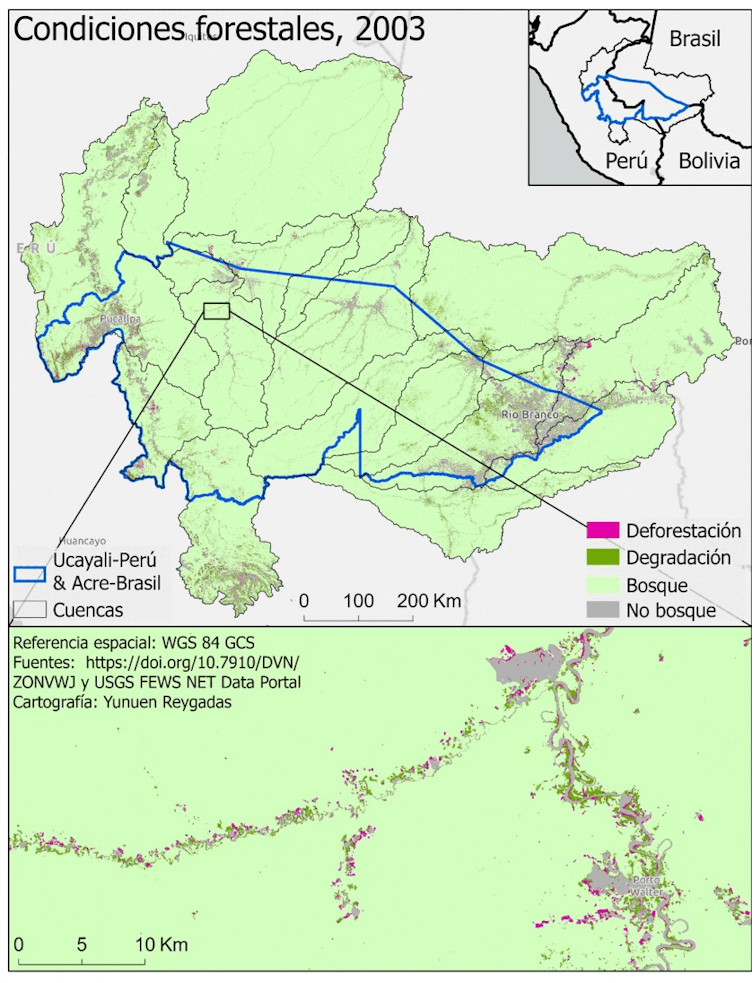
Roads are the most damaging infrastructure in the tropical rainforest, bringing deforestation and a host of related cultural and environmental impacts.
Research shows that Indigenous lands are crucial to safeguarding the forest ecosystems and immense carbon stores. These territories, covering about a third of the Amazon region, act as a buffer against road expansion, reducing both deforestation and fires.
But the Indigenous communities near the border between Peru and Brazil are experiencing an onslaught on their homelands.

When the pandemic forced governments to reduce monitoring and law enforcement in the remote rainforests, the illegal road builders, loggers, miners and traffickers increased their presence and work rate. The state’s absence gave them a relative respite from law enforcement, and in Brazil, they were goaded on by the anti-environment, anti-Indigenous and anti-science rhetoric of President Jair Bolsonaro.
A combination of road-building, climate change-induced forest heating and drying, and related deforestation is pushing the Amazon rainforest toward a tipping point that could turn the world’s largest rainforest and reserve of terrestrial biodiversity into a sparsely wooded savanna in just a few decades. Thousands of fires are burning in the Brazilian Amazon as I write this in late September 2022.
Elections could turn the tide
A few hours downriver from where she confronted the loggers, Paredes and other Peruvian Indigenous leaders met with their Brazilian counterparts in September 2022 to discuss strategies to stop the invasions. The Brazilian leaders include Francisco Piyako and Isaac Piyako, two Indigenous Ashéninka brothers running for election at the federal and state level.
The Brazilian election’s first round of voting on Oct. 2, 2022, includes more Indigenous candidates than any in Brazilian history, with the 175 candidates representing a 37% increase over 2018.
The future of the Amazon is very much at stake.
On one side of the election stands Bolsonaro, a populist who has derided Indigenous people, environmentalists and science while weakening environmental and Indigenous agencies and inciting miners, loggers, ranchers and agribusiness leaders to cut down the forest.
On the other side is Luiz Inácio Lula da Silva – commonly called Lula – a Workers Party veteran and former Brazilian president who is arguing for zero deforestation.
More important than national rhetoric may be the success of Indigenous candidates like the Piyakos who are committed to sustainability, transboundary cooperation and cultural diversity.
Peru also has elections on Oct. 2, but at the regional and municipal levels. In the Ucayali region, 37% of the candidates are Indigenous, but they have historically had very poor showings. In contrast, the winners often have strong ties to the logging, mining or coca industries.
Without adequate pro-environment and Indigenous representation, the roads and extractive development will march forward, making the Peruvian side of the forest even more vulnerable. A victory for sustainability, conservation and culture in Brazil could resonate across political borders into Peru and the other seven countries that share the Amazon, just as Paredes’ intervention in Peru stopped the tractors from ruining the forests and streams that flow into Brazil.
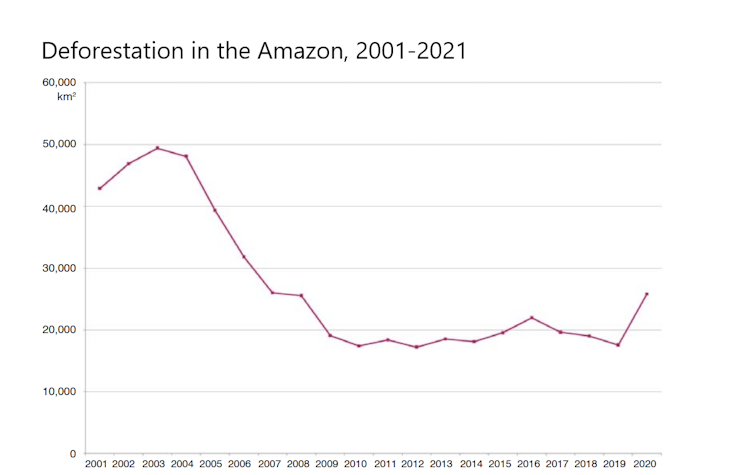
A dangerous job: Defending the Amazon
As leaders like the Piyakos, Paredes and others defend their forests and people, they are also targets for violence.
In the Amazon borderlands, danger threatens from multiple sides, and justice is rarely served. The killing of journalist Dom Phillips and activist Bruno Pereira in June 2022 was just the latest high-profile attack.
Fifteen years ago, the legendary Indigenous leader Edwin Chota protested the road that Paredes and her community are blocking today. He and three colleagues were later gunned down in 2014 after receiving death threats from loggers and traffickers. The killers remain free in the borderlands.
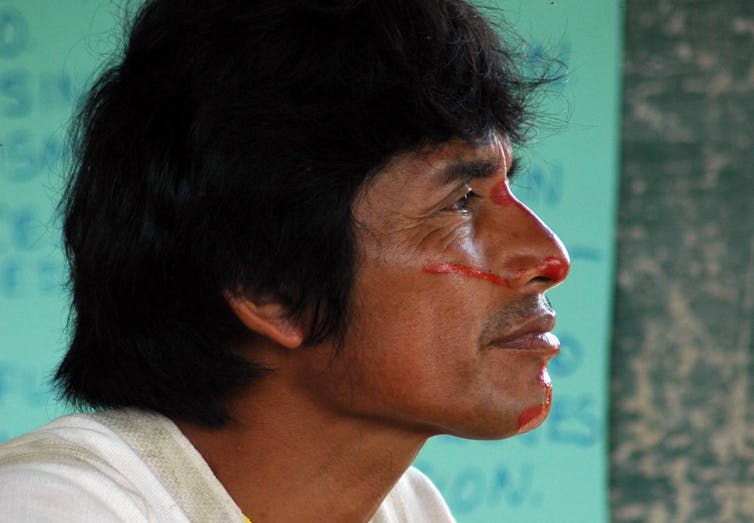
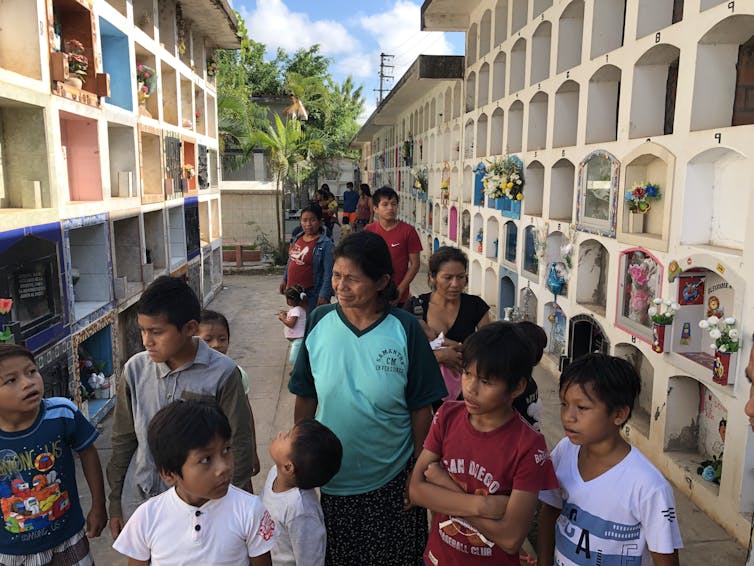
This summer, I visited Chota’s grave with over 20 of the surviving family and community members of the four slain defenders. Most of these families are afraid to return to their beautiful forests in the borderland community of Saweto, and instead remain on the outskirts of the city of Pucallpa, squeezed into dilapidated houses with intermittent electricity and clean water.
Far from their village, the children cannot build their cultural and environmental knowledge in the forest.
Five participants from Saweto were among the 120 Indigenous representatives from 13 ethnicities in the Amazon borderlands who joined our NASA workshop to discuss how they can use satellite imagery to monitor changes to the forest and climate. By integrating Indigenous ecological knowledge and geospatial analysis of the Amazon rainforest and climate, scientists and Indigenous groups can both better track the changing Amazon.
The Indigenous mothers, fathers and children told us they want training and education that will help them to protect their territory, adapt to climate change and build a sustainable future. Our NASA SERVIR project is creating mapping platforms based on satellite imagery analysis that the Indigenous communities, nongovernment organizations and government agencies can use to monitor roads, deforestation and climate change.
Indigenous defense is crucial
All of humanity is feeling the effects of climate change. Our Indigenous colleagues recognize the changes in temperature, the water cycle and the seasons already happening in their communities.
Environmental land defenders like Paredes are working to keep the world’s largest forest standing tall in the face of threats that don’t just harm the Amazon. If the Amazon rainforest becomes a savanna, there will be reverberations in the climates of South America, the Caribbean, North America and across the globe.
Everyone loses if the Indigenous defenders of the Amazon do not have the support and educational opportunities needed to be safe, prosperous and empowered to protect their rainforest home.
David S. Salisbury has collaborations with the communities of Sawawo, Saweto and Apiwtxa. He is co-investigator of a NASA SERVIR Amazonia Applied Science Team grant led by Dr. Stephanie Spera at the University of Richmond. He is a Board member of the Upper Amazon Conservancy, and has collaborated on research with ACCA, MAAP, and other Amazonian sources linked in the article. His book, Defending the Amazon, will be forthcoming in 2023.
Read These Next
How the ‘slayer rule’ might play a role in determining who will inherit wealth from Rob Reiner and h
These rules have a long history in the United States. They played a role in the notorious murders by…
As DOJ begins to release Epstein files, his many victims deserve more attention than the powerful me
Powerful men connected to Jeffrey Epstein are named, dissected and speculated about. The survivors,…
People are getting their news from AI – and it’s altering their views
Even when information is factually accurate, how it’s presented can introduce subtle biases. As large…






